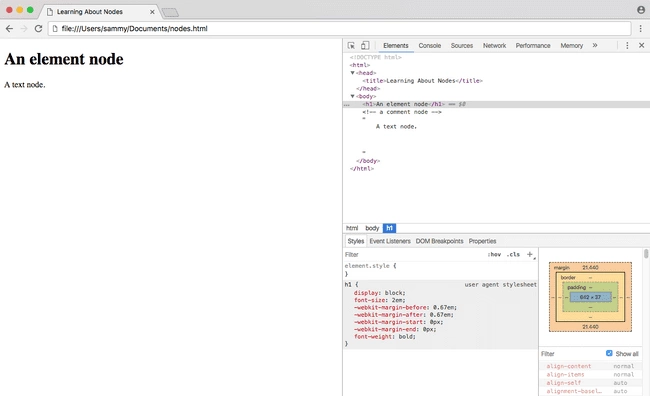STL源码剖析——数值算法stl_numeric.h
前言
在STL中,算法是独立于特定的数据结构,称为泛型算法。本节介绍的数值算法是在源码SGI STL中的
numeric数值算法源码剖析
#ifndef __SGI_STL_INTERNAL_NUMERIC_H#define __SGI_STL_INTERNAL_NUMERIC_H__STL_BEGIN_NAMESPACE/*sum (1) :The default operation is to add the elements up;这个版本的默认操作时累加;template <class InputIterator, class T>T accumulate (InputIterator first, InputIterator last, T init);custom (2): a different operation can be specified as binary_op;这个版本的操作可以是用户通过binary_op自行指定;指定函数在<stl_function.h>定义,也可自己定义template <class InputIterator, class T, class BinaryOperation>T accumulate (InputIterator first, InputIterator last, T init,BinaryOperation binary_op);*///第一个版本:默认操作是累加//计算[first,last)区间元素与init的和//返回一个副本template <class _InputIterator, class _Tp>_Tp accumulate(_InputIterator __first, _InputIterator __last, _Tp __init){__STL_REQUIRES(_InputIterator, _InputIterator);for ( ; __first != __last; ++__first)//遍历指定范围元素__init = __init + *__first;//将每个元素累加到初始值init上return __init;}//第二个版本:用户可自行指定二元操作函数template <class _InputIterator, class _Tp, class _BinaryOperation>_Tp accumulate(_InputIterator __first, _InputIterator __last, _Tp __init,_BinaryOperation __binary_op){__STL_REQUIRES(_InputIterator, _InputIterator);for ( ; __first != __last; ++__first)//遍历指定范围元素__init = __binary_op(__init, *__first);//对每个元素执行二元操作return __init;}//下面举例子:/*accumulate example:#include <iostream> // std::cout#include <functional> // std::minus#include <numeric> // std::accumulateint myfunction (int x, int y) {return x+2*y;}struct myclass {int operator()(int x, int y) {return x+3*y;}} myobject;int main () {int init = 100;int numbers[] = {10,20,30};std::cout << "using default accumulate: ";std::cout << std::accumulate(numbers,numbers+3,init);std::cout << '\n';std::cout << "using functional's minus: ";std::cout << std::accumulate (numbers, numbers+3, init, std::minus<int>());std::cout << '\n';std::cout << "using custom function: ";std::cout << std::accumulate (numbers, numbers+3, init, myfunction);std::cout << '\n';std::cout << "using custom object: ";std::cout << std::accumulate (numbers, numbers+3, init, myobject);std::cout << '\n';return 0;}Output:using default accumulate: 160using functional's minus: 40using custom function: 220using custom object: 280*//*默认操作是把内积(相乘)的值与初始值init相加用户可以自行指定操作类型sum/multiply (1)template <class InputIterator1, class InputIterator2, class T>T inner_product (InputIterator1 first1, InputIterator1 last1,InputIterator2 first2, T init);custom (2)template <class InputIterator1, class InputIterator2, class T,class BinaryOperation1, class BinaryOperation2>T inner_product (InputIterator1 first1, InputIterator1 last1,InputIterator2 first2, T init,BinaryOperation1 binary_op1,BinaryOperation2 binary_op2);*///描述:The two default operations (to add up the result of multiplying the pairs)//may be overridden by the arguments binary_op1 and binary_op2.//功能:Returns the result of accumulating init with the inner products of the pairs//formed by the elements of two ranges starting at first1 and first2.//版本一:使用默认操作template <class _InputIterator1, class _InputIterator2, class _Tp>_Tp inner_product(_InputIterator1 __first1, _InputIterator1 __last1,_InputIterator2 __first2, _Tp __init){__STL_REQUIRES(_InputIterator2, _InputIterator);__STL_REQUIRES(_InputIterator2, _InputIterator);//以第一个序列的元素个数为据,将两个序列都走一遍for ( ; __first1 != __last1; ++__first1, ++__first2)、__init = __init + (*__first1 * *__first2);//执行两个序列的内积与初始值init相加return __init;}//版本二:用户可自行指定二元操作函数template <class _InputIterator1, class _InputIterator2, class _Tp,class _BinaryOperation1, class _BinaryOperation2>_Tp inner_product(_InputIterator1 __first1, _InputIterator1 __last1,_InputIterator2 __first2, _Tp __init,_BinaryOperation1 __binary_op1,_BinaryOperation2 __binary_op2){__STL_REQUIRES(_InputIterator2, _InputIterator);__STL_REQUIRES(_InputIterator2, _InputIterator);//以第一个序列的元素个数为据,将两个序列都走一遍for ( ; __first1 != __last1; ++__first1, ++__first2)//首先指定__binary_op2操作,再指定__binary_op1操作__init = __binary_op1(__init, __binary_op2(*__first1, *__first2));return __init;}//下面举例子:/*inner_product example:#include <iostream> // std::cout#include <functional> // std::minus, std::divides#include <numeric> // std::inner_productint myaccumulator (int x, int y) {return x-y;}int myproduct (int x, int y) {return x+y;}int main () {int init = 10;int series1[] = {10,20,30};int series2[] = {1,2,3};std::cout << "using default inner_product: ";std::cout << std::inner_product(series1,series1+3,series2,init);std::cout << '\n';std::cout << "using functional operations: ";std::cout << std::inner_product(series1,series1+3,series2,init,std::minus<int>(),std::divides<int>());std::cout << '\n';std::cout << "using custom functions: ";std::cout << std::inner_product(series1,series1+3,series2,init,myaccumulator,myproduct);std::cout << '\n';return 0;}Output:using default inner_product: 150using functional operations: -20using custom functions: -56*///局部求和/*功能与描述:Assigns to every element in the range starting at result the partial sum ofthe corresponding elements in the range [first,last).If x represents an element in [first,last) and y represents an element in result, the ys can be calculated as:y0 = x0y1 = x0 + x1y2 = x0 + x1 + x2y3 = x0 + x1 + x2 + x3y4 = x0 + x1 + x2 + x3 + x4... ... ...*//*版本一:默认操作是:The default operation is to add the elements up;sum (1)template <class InputIterator, class OutputIterator>OutputIterator partial_sum (InputIterator first, InputIterator last,OutputIterator result);版本二:用户可以自行指定二元操作:operation can be specified as binary_op instead.custom (2)template <class InputIterator, class OutputIterator, class BinaryOperation>OutputIterator partial_sum (InputIterator first, InputIterator last,OutputIterator result, BinaryOperation binary_op);*///版本一:默认操作函数template <class _InputIterator, class _OutputIterator, class _Tp>_OutputIterator__partial_sum(_InputIterator __first, _InputIterator __last,_OutputIterator __result, _Tp*){_Tp __value = *__first;while (++__first != __last) {//遍历区间元素__value = __value + *__first;//区间前n个元素的总和*++__result = __value;//把元素赋给输出端}return ++__result;}template <class _InputIterator, class _OutputIterator>_OutputIteratorpartial_sum(_InputIterator __first, _InputIterator __last,_OutputIterator __result){__STL_REQUIRES(_InputIterator, _InputIterator);__STL_REQUIRES(_OutputIterator, _OutputIterator);if (__first == __last) return __result;//若为空*__result = *__first;//初始值//调用上面的函数,萃取出first的类型方便上面函数使用return __partial_sum(__first, __last, __result, __VALUE_TYPE(__first));}//版本二:用户指定二元操作函数template <class _InputIterator, class _OutputIterator, class _Tp,class _BinaryOperation>_OutputIterator__partial_sum(_InputIterator __first, _InputIterator __last,_OutputIterator __result, _Tp*, _BinaryOperation __binary_op){_Tp __value = *__first;while (++__first != __last) {//遍历区间元素__value = __binary_op(__value, *__first);//区间前n个元素的__binary_op*++__result = __value;//把元素赋给输出端}return ++__result;}template <class _InputIterator, class _OutputIterator, class _BinaryOperation>_OutputIteratorpartial_sum(_InputIterator __first, _InputIterator __last,_OutputIterator __result, _BinaryOperation __binary_op){__STL_REQUIRES(_InputIterator, _InputIterator);__STL_REQUIRES(_OutputIterator, _OutputIterator);if (__first == __last) return __result;*__result = *__first;//调用上面的函数,萃取出first的类型方便上面函数使用return __partial_sum(__first, __last, __result, __VALUE_TYPE(__first),__binary_op);}//下面举例:/*partial_sum example:#include <iostream> // std::cout#include <functional> // std::multiplies#include <numeric> // std::partial_sumint myop (int x, int y) {return x+y+1;}int main () {int val[] = {1,2,3,4,5};int result[5];std::partial_sum (val, val+5, result);std::cout << "using default partial_sum: ";for (int i=0; i<5; i++) std::cout << result[i] << ' ';std::cout << '\n';std::partial_sum (val, val+5, result, std::multiplies<int>());std::cout << "using functional operation multiplies: ";for (int i=0; i<5; i++) std::cout << result[i] << ' ';std::cout << '\n';std::partial_sum (val, val+5, result, myop);std::cout << "using custom function: ";for (int i=0; i<5; i++) std::cout << result[i] << ' ';std::cout << '\n';return 0;}Output:using default partial_sum: 1 3 6 10 15using functional operation multiplies: 1 2 6 24 120using custom function: 1 4 8 13 19*//*功能与描述:Assigns to every element in the range starting at result the differencebetween its corresponding element in the range [first,last)and the one preceding it (except for *result, which is assigned *first).If x represents an element in [first,last) and y represents an element in result, the ys can be calculated as:y0 = x0y1 = x1 - x0y2 = x2 - x1y3 = x3 - x2y4 = x4 - x3... ... ...The default operation is to calculate the difference, but some other operation can be specified as binary_op instead.*//*difference (1)template <class InputIterator, class OutputIterator>OutputIterator adjacent_difference (InputIterator first, InputIterator last,OutputIterator result);custom (2)template <class InputIterator, class OutputIterator, class BinaryOperation>OutputIterator adjacent_difference ( InputIterator first, InputIterator last,OutputIterator result, BinaryOperation binary_op );*///版本一:默认操作函数template <class _InputIterator, class _OutputIterator, class _Tp>_OutputIterator__adjacent_difference(_InputIterator __first, _InputIterator __last,_OutputIterator __result, _Tp*){_Tp __value = *__first;while (++__first != __last) {//遍历区间_Tp __tmp = *__first;//初始化tmp*++__result = __tmp - __value;//计算相邻两元素的差额(后-前),并赋给输出端__value = __tmp;//更新当前值}return ++__result;}template <class _InputIterator, class _OutputIterator>_OutputIteratoradjacent_difference(_InputIterator __first,_InputIterator __last, _OutputIterator __result){__STL_REQUIRES(_InputIterator, _InputIterator);__STL_REQUIRES(_OutputIterator, _OutputIterator);if (__first == __last) return __result;//若为空直接返回*__result = *__first;//初始值//调用上面的函数__adjacent_difference()return __adjacent_difference(__first, __last, __result,__VALUE_TYPE(__first));}//版本二:可指定操作函数template <class _InputIterator, class _OutputIterator, class _Tp,class _BinaryOperation>_OutputIterator__adjacent_difference(_InputIterator __first, _InputIterator __last,_OutputIterator __result, _Tp*,_BinaryOperation __binary_op) {_Tp __value = *__first;while (++__first != __last) {//遍历区间_Tp __tmp = *__first;//初始化tmp*++__result = __binary_op(__tmp, __value);//计算相邻两元素的操作,并赋给输出端__value = __tmp;//更新当前值}return ++__result;}template <class _InputIterator, class _OutputIterator, class _BinaryOperation>_OutputIteratoradjacent_difference(_InputIterator __first, _InputIterator __last,_OutputIterator __result, _BinaryOperation __binary_op){__STL_REQUIRES(_InputIterator, _InputIterator);__STL_REQUIRES(_OutputIterator, _OutputIterator);if (__first == __last) return __result;//若为空直接返回*__result = *__first;//初始值//调用上面的函数__adjacent_difference()return __adjacent_difference(__first, __last, __result,__VALUE_TYPE(__first),__binary_op);}//下面举例子:/*adjacent_difference example:#include <iostream> // std::cout#include <functional> // std::multiplies#include <numeric> // std::adjacent_differenceint myop (int x, int y) {return x+y;}int main () {int val[] = {1,2,3,5,9,11,12};int result[7];std::adjacent_difference (val, val+7, result);std::cout << "using default adjacent_difference: ";for (int i=0; i<7; i++) std::cout << result[i] << ' ';std::cout << '\n';std::adjacent_difference (val, val+7, result, std::multiplies<int>());std::cout << "using functional operation multiplies: ";for (int i=0; i<7; i++) std::cout << result[i] << ' ';std::cout << '\n';std::adjacent_difference (val, val+7, result, myop);std::cout << "using custom function: ";for (int i=0; i<7; i++) std::cout << result[i] << ' ';std::cout << '\n';return 0;}output:using default adjacent_difference: 1 1 1 2 4 2 1using functional operation multiplies: 1 2 6 15 45 99 132using custom function: 1 3 5 8 14 20 23*/// Returns __x ** __n, where __n >= 0. _Note that "multiplication"// is required to be associative, but not necessarily commutative.//power为SGI专属,并不在STL标准之列,它用来计算某数的n幂次方。// 版本一,幂次方。如果指定为乘法运算,则当n >= 0 时传回 x^n。// 注意,"multiplication" 必须满足结合律(associative),// 但不需满足交换律(commutative)。template <class _Tp, class _Integer, class _MonoidOperation>_Tp __power(_Tp __x, _Integer __n, _MonoidOperation __opr){if (__n == 0)return identity_element(__opr);else {while ((__n & 1) == 0) {__n >>= 1;__x = __opr(__x, __x);}_Tp __result = __x;__n >>= 1;while (__n != 0) {__x = __opr(__x, __x);if ((__n & 1) != 0)__result = __opr(__result, __x);__n >>= 1;}return __result;}}//版本二:以 multiplies<_Tp>()操作调用版本一template <class _Tp, class _Integer>inline _Tp __power(_Tp __x, _Integer __n){return __power(__x, __n, multiplies<_Tp>());}// Alias for the internal name __power. Note that power is an extension,// not part of the C++ standard.//对上面函数的封装template <class _Tp, class _Integer, class _MonoidOperation>inline _Tp power(_Tp __x, _Integer __n, _MonoidOperation __opr){return __power(__x, __n, __opr);}template <class _Tp, class _Integer>inline _Tp power(_Tp __x, _Integer __n){return __power(__x, __n);}// iota is not part of the C++ standard. It is an extension.//C++11已经把这个列为STL的标准//设定某个区间的内容,使其每个元素从指定值value开始,呈现递增//在 [first,last) 范围内內填入value, value+1, value+2...template <class _ForwardIter, class _Tp>voidiota(_ForwardIter __first, _ForwardIter __last, _Tp __value){__STL_REQUIRES(_ForwardIter, _Mutable_ForwardIterator);__STL_CONVERTIBLE(_Tp, typename iterator_traits<_ForwardIter>::value_type);while (__first != __last)*__first++ = __value++;}//举例子:/*iota example#include <iostream> // std::cout#include <numeric> // std::iotaint main () {int numbers[10];std::iota (numbers,numbers+10,100);std::cout << "numbers:";for (int& i:numbers) std::cout << ' ' << i;std::cout << '\n';return 0;}output:numbers: 100 101 102 103 104 105 106 107 108 109*/__STL_END_NAMESPACE#endif /* __SGI_STL_INTERNAL_NUMERIC_H */// Local Variables:// mode:C++// End:
参考资料:
《STL源码剖析》侯捷



































还没有评论,来说两句吧...